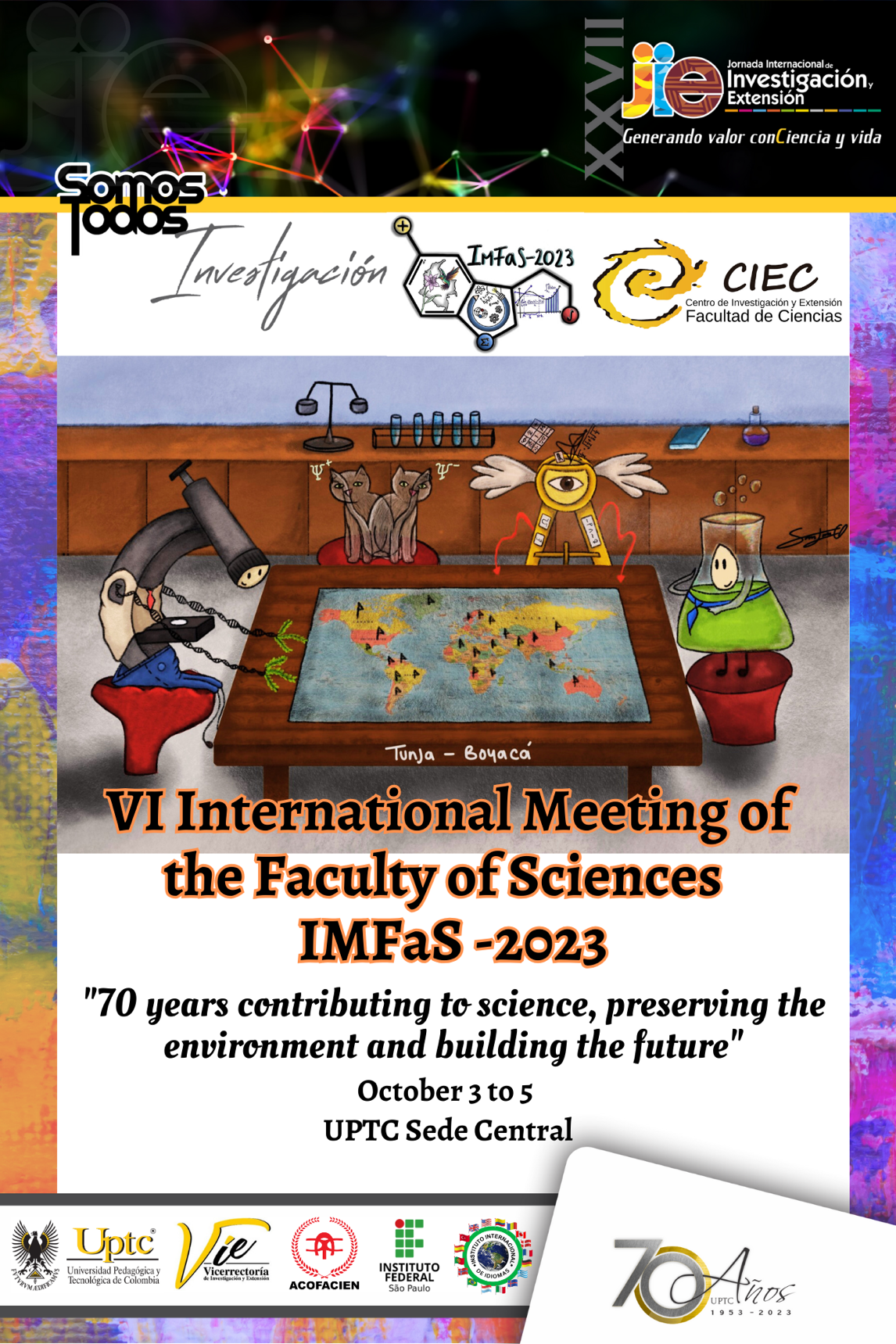Ecological insecticide from extracts of Citrus sinensis and Citrus latifolia against Aedes aegypti

Abstract
Aedes aegypti is a vector of arboviruses such as dengue, Zika, and Chikungunya, posing a threat to public health. Additionally, chemical insecticide control strategies have adverse effects due to insecticide resistance and soil contamination. This research evaluated the use of natural extracts from Citrus sinensis and Citrus latifolia obtained through the reflux method with ethanol, hexane, and chloroform, with mortality counts conducted over 72 hours. Citrus latifolia extracts obtained with ethanol and chloroform showed high efficacy as insecticides, achieving between 75 % and 80 % mortality within the first 12 hours, while Citrus sinensis extracts obtained with chloroform and ethanol solvents showed values lower than 50 % within the first 24 hours. Citrus extracts are emerging as a promising alternative in Ae. aegypti control.
Keywords
Aedes aegypti, Citrus sinensis, Citrus latifolia, vector control, natural extracts, insecticide.
References
- L. Braack, A. Gouveia de Almeida, A. Cornel, R. Swanepoel & C. De Jager. “Mosquito-borne arboviruses of African origin: review of key viruses and vectors”. Parasites & vectors. Vol. 11, pp. 1-26. 2018.
- M. U. Kraemer, M. E.Sinka, K. A. Duda, A. Q. Mylne, F. M. Shearer, C. M. Barker, ...& S. I. Hay.“The global distribution of the arbovirus vectors Aedes aegypti and Ae. albopictus”. elife. Vol. 4, pp. 1-18. June, 2020. https://doi.org/10.7554/eLife.08347
- Z. Amelia-Yap, D. Chen, M. Sofian-Azirun & L. Low, “Pyrethroid resistance in the dengue vector Aedes aegypti in Southeast Asia: current status and management prospects”. Parasites & Vectors Vol. 11, pp. 11- 17. 2018. https://doi.org/10.1186/s13071-018-2899-0
- J. Padilla, D. Rojas & R. Sáenz, “Dengue en Colombia: Epidemiología de la reemergencia a la hiperendemia”. Vol. 5, pp. 1-83. September, 2015. https://doi.org/10.18270/rsb.v5i1.186
- Instituto Nacional de Salud, Boletín epidemiológico semana 39 de 2023, 2023 [online] https://www.ins.gov.co/buscador-eventos/Paginas/Vista-Boletin-Epidemilogico.aspx
- Ministerio de Salud y Protección Social, Alerta Epidemiológica por Dengue en Colombia, Boletín de Prensa N° 143 de 2023, 2023 [online] https://www.minsalud.gov.co/Paginas/Alerta-epidemiologica-por-dengue-en-Colombia.aspx
- P. Rezende-teixeira, R. Dusi, P. Jimenez, L. Espindola & L. Costa-lotufo, “What can we learn from commercial insecticides? Efficacy, toxicity, environmental impacts, and future developments”. Environmental Pollution, Vol. 300. 2022. https://doi.org/10.1016/j.envpol.2022.118983
- A. Romero, “Resistance to insecticides: Advances in the biology and management of modern bed bugs”. pp. 273-284. 2018. DOI:10.1002/9781119171539.
- R. Al-Zahrani Mohamd, A. Mahyoub Jazem, M. Al- Ghamdi Khalid, & M. Al-Solami Habeeb, “Bioefficacy of some insect growth regulators and plant extracts against mosquito larvae of Aedes aegypti”. GSC Biological and Pharmaceutical Sciences. Vol. 6. 2019. 10.30574/gscbps.2019.6.1.0148
- M. R. S. Silvério, L. S. Espindola, N. P. Lopes, & P. C. Vieira, “Plant natural products for the control of Aedes aegypti: The main vector of important arboviruses”. Molecules. Vol 25, pp. 1-42. 2020. https://doi.org/10.3390/molecules25153484
- H. Bosly, “Larvicidal and adulticidal activity of essential oils from plants of the Lamiaceae family against the West Nile virus vector, Culex pipiens (Diptera: Culicidae)”. Saudi Journal of Biological Sciences. Vol. 29. 2022. DOI: 10.1016/j.sjbs.2022.103350
- A. Obembe, & O. G. Oso, “Larvicidal Effects of Citrus Peels Extracts against Culex Pipiens Mosquitoes". Althea Medical Journal. Vol 9, pp. 185-190. 2022. https://doi.org/10.15850/amj.v9n4.2786
- R. Martianasari & P. Hamid, “Larvicidal, adulticidal, and oviposition-deterrent activity of Piper betle L. essential oil to Aedes aegypti”. Veterinary world. Vol. 12 pp.363-367. 2019. DOI: 10.14202/vetworld.2019.367-371
- Luz. T, De Mesquita. L, Do Amaral. F, & Coutinho. D. “Essential oils and their chemical constituents against Aedes aegypti L. (Diptera: Culicidae) larvae”. Acta Tropica, 212:105705. 2020. https://doi.org/10.1016/j.actatropica.2020.105705
- M. Falkowski, A. Jahn-Oyac, G. Odonne, C. Flora, Y. Estevez, S. Touré, ... & E. Houël, “Towards the optimization of botanical insecticides research: Aedes aegypti larvicidal natural products in French Guiana”. Acta tropica. Vol. 201. 2020. https://doi.org/10.1016/j.actatropica.2019.105179
- Rodriguez, A. Sampaio, C. Souza, J. Campos, A. Silva, A. Morais, S & Martins V. “Different susceptibilities of Aedes aegypti and Aedes albopictus larvae to plant-derived products”. Revista da Sociedade Brasileira de Medicina Tropical 52. 2019.https://doi.org/10.1590/0037-8682-0197-2018
- Hue, P. Loc, T. Vien, L. Sy, L. Hieu, H. Nhung, L. Thanh, D. Khoa, “P. Optimization of Citrus limon peel extraction, determination of main chemical components and effectiveness in repellency against Aedes mosquito dengue fever vector”. Vietnam Journal of Biotechnology. Vol. 20 pp. 329-338. 2022. DOI: https://doi.org/10.15625/1811-4989/16365
- Tran, T. Ngo, T.H Tran, T. Tran, Huynh, X. Do, V Nguyen, K. Nguyen, M. Bach, L. “Yields and composition of Persian lime essential oils (Citrus latifolia) from Hau Giang province, Vietnam extracted by three different extraction methods”. IOP Conference Series: Materials Science and Engineering. 2020. DOI 10.1088/1757-899X/991/1/012130
- W.Z. Qing, L.G. Li, C.Y. Wen, “Techniques for extraction and isolation of natural products: a comprehensive review”. Chin Med. Vol 13, pp. 1-26, April 2018. https://doi.org/10.1186/s13020-018-0177-x7
- S. Palmieri, M. Pellegrini, A. Ricci, D. Compagnone, C. Lo Sterzo, “Chemical Composition and Antioxidant Activity of Thyme, Hemp and Coriander Extracts: A Comparison Study of Maceration, Soxhlet, UAE and RSLDE Techniques”. Foods. Vol 9, pp. 1-18, August 2020. https://doi.org/10.3390/foods9091221
- W. M. Hikal, R. S. Baeshen, &, H. A. Said-Al Ahl, “Botanical insecticide as simple extractives for pest control”. Cogent Biology. Vol. 3, pp. 1-16. November, 2017. https://doi.org/10.1080/23312025.2017.
- D. Bekele, “Review on insecticidal and repellent activity of plant products for malaria mosquito control”. Biomed. Res. Rev. Vol. 2, pp. 2-7. 2018. DOI: 10.15761/BRR.1000114
- K. Murugan, P. Mahesh, K. Kovendan, D. Amerasan, J. Subrmaniam & J. Hwang. “Larvicidal, pupicidal, repellent and adulticidal activity of Citrus sinensis orange peel extract against Anopheles stephensi, Aedes aegypti and Culex quinquefasciatus (Diptera: Culicidae)”. Parasitol Res. Vol 111, pp. 1757–1769. July 15, 2012. https://doi.org/10.1007/s00436-012-3021-8
- D. Aggarwal, R. R Samal & S. Kumar, “Comparative Larvicida Efficacy of alpha-Cypermethrin alone and alpha-cypermetrhin/Citrus sinensis peel extract binary mixtures againts Aedes aegypti L”. Rom. J. Biol. – Zool., Vol. 65, pp. 83–98, Bucharest, 2020.
- R. Warikoo, A. Ray,J. K. Sandhu,S. Roopa,N. Wahab & S. Kumar. “Larvicidal and irritant activities of hexane leaf extracts of Citrus sinensis against dengue vector Aedes aegypti L. Asian pacific journal of tropical biomedicine”. Vol.2(2), pp.152-155, February 2012. https://doi.org/10.1016/S2221-1691(11)60211-6